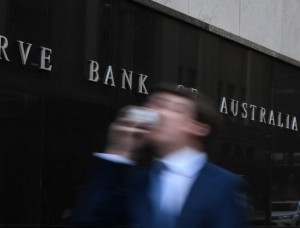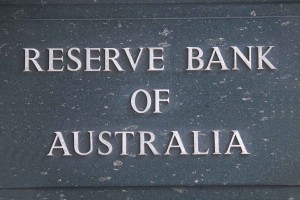There are more interesting articles, commentaries and analyst reports on the Web every week than anyone could read in a month.
Each Saturday morning I like to share some of the ones I’ve read during the week.
The weekend will be over before you know it, so enjoy some weekend reading.
What now for Sydney’s property market? 5 experts give their predictions
With headlines screaming constant uncertainty – what’s really in store for the Sydney property market?
This article on Domain.com.au asks that exact question from 5 leading experts.
Uncertainty is the only certainty when it comes to the future of Sydney’s property market.
With the final report from the banking royal commission handed down last week and both a state and federal election looming, we asked five experts how they expect the Sydney market will fare over the rest of this year.
Ernst & Young Oceania chief economist Jo Masters
Weakening demand and market sentiment are the emerging themes for 2019, Ms Masters said.
“There are widespread expectations of further prices falls,” she said. “We’re starting to see weakness in the housing market broaden out, not from just Sydney and Melbourne geographically, but across segments.”
“There’s real weakness in owner-occupier finance and also in the first-home buyer segment.”
While first-home buyer demand may have been pushed forward by changes to stamp duty in 2017 and was also affected by tighter lending restrictions, Ms Masters said it reflected a pull-back in buyer sentiment.
“We know that first-home buyers were accessing credit throughout 2017 and 2018,” she said.
“[But now] the segment seems to be falling, despite affordability improving.”
Ms Masters said the upcoming state and federal elections were only feeding into the market uncertainty and expected buyers — particularly first-home buyers who have higher loan-to-value ratios — would wait to see signs of a slow down in price falls.
She predicted we’re halfway through the market downturn, but noted unless price falls slowed soon, we could see a peak-to-trough fall of more than 20 per cent.
“Those forecast of 20 per cent peak-to-trough declines were predicated on starting to see signs of the slowdown in house prices falls, and we just haven’t seen that yet.”
BIS Oxford Economics managing director Robert Mellor
Hesitation from both buyers and sellers could continue until at least mid-year, according to Mr Mellor.
While “we’ve seen the worst of it” when it comes to tighter lending restrictions, Mr Mellor also expected a decline in buyer demand, particularly among first-
home buyers who have been propping up loan volumes.
“First-home buyers don’t want to buy into the market if they there is another 10 per cent decline [possible],” he said.
While timing was less critical for upgraders and downgraders, buying and selling in the same market, Mr Mellor said many would be reluctant to make a move.
“We’re in for a fair degree of hesitation until people see price data start to show, not flattening prices, but at the very least [smaller price declines],” he added.
As for investors, Mr Mellor said it was possible some were sitting on their hands awaiting the outcome of the federal election and potential changes to negative gearing.
But, he added, it was unlikely they would rush back if the current tax settings remained because there was little growth on the horizon.
He noted that, for the same reason, if negative gearing was scrapped by a Labor government, the impact shouldn’t be significant because investors had less market share than in previous years.
If the market — forecast to see a peak-to-trough fall of about 15 per cent — bottoms out late this year or early next year, it will be a slow recovery, with mediocre price growth expected for a couple of years, Mr Mellor said.
Commonwealth Bank senior economist Gareth Aird
While credit tightening should be “done and dusted”, home loan approvals — down almost 20 per cent in 2018 — are expected to remain weak, Mr Aird said.
“It’s not because of constraint on the supply of credit; it’s basically because demand for credit has come off in line with views that house prices have further to fall,” Mr Aird said.
He expects credit demand to remain soft for the next three to six months and said the sharper than expected fall in credit growth, and drop in market sentiment, were key factors behind revised forecasts released by Commonwealth Bank last week.
The forecast, released on Thursday, predicted Sydney’s prices would fall another 5 per cent this year — which would take them to 15 per cent below their June 2017 peak.
“There’s a self-fulfilling nature … the timing of lending standards occurred quite a while ago. It’s not that, in and of itself, now,” Mr Aird said.
“If households as a collective expect house prices to go down … they invariably will because buyers hold off buying or offer lower prices, and that’s in part how you can get a correction down, the same thing happens on the way up.”
As prices continue to fall, Mr Aird expected investors would make their way back to the market as yields would become more appealing.
“I’m sure there are some investors sitting on the sidelines, just waiting to see the result of the election [and potential changes to negative gearing].”
NAB chief economist Alan Oster
Sydney’s property market has been hurt by APRA’s crackdown, said NAB chief economist Alan Oster, and prices have further to fall.
“I don’t see tightening of credit coming out of the royal commission … but I do see more emphasis on expenses and [banks] may become a little more gun shy, in the sense of knowing people are watching them in case they make a loan that turns bad.”
Mr Oster said while banks were looking more carefully at expenses, customer expectations were also changing.
“Previously buyers thought I better get in or prices will keep going up, now they’re thinking they’re not sure if they should,” Mr Oster said.
While NAB has kept its price forecast at a 15 per cent peak-to-trough fall, it announced on Tuesday that it now expects the Reserve Bank to keep interest rates on hold well into the next decade.
The bank, which had previously believed the next move would be up, now believes the RBA could even be forced into cutting the rate from its record low of 1.5 per cent, within months.
“I don’t see it going up, [but] we do see a significant and growing chance that it might go down,” said Mr Oster.
The revision comes as its latest monthly business survey shows a slump in confidence across the east coast.
Housing Industry Association principal economist Tim Reardon
Despite a record number of apartments set to be completed, there is little fear of an oversupply of dwellings and significant further price falls, said Housing Industry Association principal economist Tim Reardon said.
“While unemployment remains low … and population growth remains strong, the depths of this cycle will be relatively shallow,” Mr Reardon said
Apartments will clear relatively quickly, Mr Reardon added, as developers were holding back until conditions improved – with apartment approvals data for the December quarter down more than 33 per cent year on year.
“The rate at which they slowed down at the end of 2018 was a surprise, but now that the credit squeeze has occurred, we expect approvals will continue with a relatively slower, slow
down over the next two years.”
Read the full article here
Vacancy rates in January
January appeared to show a slowdown in vacancy rates.
This Blog by Pete Wargent looks at the results.
Vacancy rates seasonally lower
Vacancy rates fell everywhere in January, except for Hobart which is already remarkably tight with a vacancy rate of only 0.5 per cent, or 144 vacancies.
In Sydney the vacancy rate fell from 3.6 per cent to 3.2 per cent in January, but the trend has been strongly higher over the past year as the construction cycle peaks, especially in regions such as Epping and the Hills District, Parramatta, and south-western Sydney.
Notably Perth is now tightening apace, with a lower vacancy rate than Sydney, while Adelaide looks set to reach a tight rental market some time later this year.
Brisbane looks set to balance out this year as apartment construction slows down.
Read the full article here
Australians are feeling optimistic again because the RBA may cut rates
Will we be seeing a interest rate cut sooner than expected?
According to an article on Business Insider more and more Australians are feeling optimistic amidst pressure on the RBA to cut down rates.
Australians, particularly mortgage holders, felt a lot more optimistic in February because a possible slowdown in the economy may force the RBA to cut rates again.
The Westpac-MI index rose 4.3% to 103.8, recovering after falling to a multi-year low in January.
A reading above 100 indicates that optimists outnumbered pessimists in the latest survey.
Westpac Bank
“Sentiment has recovered after a shaky start to the year,” said Matthew Hassan, Senior Economist at Westpac.
“The February lift takes the Index back into ‘cautiously optimistic’ territory.
“While that may indicate some of last month’s decline was holiday season noise, the survey detail suggests the Reserve Bank’s recent shift in tone has also played a part.”
During the survey period, the RBA acknowledged that risks to the domestic and global economies had increased since late last year, seeing the bank drop its reference to the next move in the cash rate as likely to be higher.
It described the risks to the next move as evenly balanced, and downgraded its expectations for GDP growth, unemployment and inflation in the years ahead.
The shift to a neutral policy bias from the bank saw financial markets move to fully price a rate cut by the end of this year, with a small risk of a second cut also seen in 2020.
Hassan said responses from survey participants suggests the prospect of rate cuts helped boost sentiment levels this month.
“We get a clear picture of how this has impacted consumer expectations from an additional question, run every six months, on respondents’ outlook for mortgage interest rates,” he said.
“Back in August, about half of Australians expected rates to rise over the next twelve months.
That proportion fell to just below 43% in this month’s survey, the lowest reading since August 2016, the last time the RBA cut official interest rates.
“The February survey also showed a strong 7.4% lift in sentiment amongst consumers with a mortgage, another indication that diminished rate rise fears have been a support.”
Read the full article here
What the Royal Commission report means for buyers
The recent Banking Royal Commission has left many wondering what the aftermath will look like – but what does the report really mean for property buyers?
In this article for Switzer, John McGrath looks at what we can expect.
Buyers in the property market have been feeling the effects of the Banking Royal Commission well before the final report was released last week.
Greater scrutiny of borrowers’ spending and stricter serviceability and income tests have resulted in in many buyers not being able to borrow as much as they thought, thereby reducing their budgets.
Loans are also taking longer to approve, often longer than the typical campaign timeframe of four weeks, which has meant many buyers have not been able to bid at auction for the homes they want.
The tightened credit environment has no doubt sped up the cooling of both Sydney and Melbourne and has led to median price falls in other markets as well.
Latest CoreLogic figures show weaker conditions across most capital cities and a ‘loss of steam’ in other areas where values are rising.
So, in terms of the Royal Commission’s final report, the big question for buyers was whether the report would make any recommendations that would make it easier or harder to get a home loan.
The report basically says current rules for loan assessments by the banks are adequate, they just haven’t been followed or enforced well enough in recent years.
The report noted that the banks have already begun to address this and have made substantial changes to meet their obligations.
How this translates to today’s buyers is that credit will remain harder to get.
The bar has been shifted and we need to get used to it.
The era of easy credit is over and this is good because it will help ensure the long-term stability of both our property market and the economy as a whole.
I see the role of mortgage brokers becoming even more important in helping customers navigate what will now be a longer and more detailed process.
Alan Hemmings, General Manager of McGrath’s mortgage broking division, Oxygen Home Loans says customers are feeling frustrated and brokers can eliminate much of their confusion and stress.
“Borrowers need an experienced broker with vast product knowledge to help them through the process. Customers are coming to us saying they feel overwhelmed and need help.
“Brokers should do more than home loan applications.
I’d be suggesting for a broker to work with clients well before the application stage to help them budget for their deposit and understand what type of property they can afford.
The key benefits of brokers today include choosing the right lender whether it be a bank or non-bank, with consideration to how each one has altered their assessment criteria, to get loans approved faster.
“There are differences in the way lenders look at expenses, especially discretionary expenses; and there are also differences in how they assess income.
Understanding these differences helps ensure customers maximise their chances of getting approval,” Alan says.
This is important because when a loan is refused, not only is the buyer’s purchase delayed while they go through the application process a second time, the refusal is recorded on their credit history.
Brokers can also educate clients on new lenders and the opportunities they present.
“Brokers can help customers understand how online-only lenders, smaller banks and non-banks work.
A huge number of small lenders have entered the marketplace over the past few years but many customers don’t know about them.
“Right now, many are offering significantly better rates than the big banks to gain market share, so we’re taking a lot of clients down this non-traditional path to secure a much better rate for them,” Alan concludes.
I have always advocated making the process of getting a loan easier for clients.
That’s why McGrath set up Oxygen in the first place. But good quality regulation is certainly required to make sure all broking customers receive excellent, open, honest and transparent advice.
Read the full article here
The pawfect dog breed for every type of home
Whether you have a house or apartment – there’s a perfect dog just waiting to join your family.
An article on Realestate.com.au looks at the perfect dog for every type of home.
Furry friends bring endless amounts of joy to your household, so whether you live in an apartment, share house, terrace or standalone home, you can be rest assured there’s a dog breed suited to your space.
Is it the right time in your life for a dog to finally join you or your family?
Though exciting every step of the way, adding a pup to your family is a big responsibility that shouldn’t be taken lightly.
There’s a whole lot that needs to be taken into account before you bring your new best friend home – and the type of home you live in is just one consideration.
Dr Cherlene Lee, veterinarian and owner of Sydney’s My Vet Animal Hospital, says placing an active dog in an environment that lacks stimulation can have a detrimental effect.
“The wrong environment can lead to severe anxiety in dogs and can increase a dog’s destructive tendencies.
In these cases, dogs are often surrendered and are placed at risk of being euthanised,” she says.
To help you choose a dog breed that best suits your lifestyle and living situation, Dr Cherlene reveals the top three dog breeds for every type of home
Which dog best suits your household?
1. Greyhound
It may surprise you, but greyhounds do, in fact, make great apartment pups.
“For such great athletes, they are known to be couch potatoes.
That said, exceptions do exist, so it’s important to consider the personality of the dog,” says Cherlene.
Pets in the bedroom. Yes or No?
2. Bedlington Terrier
Another great choice for smaller flats, these guys do not shed and are typically good-natured.
3. Griffon Bruxellois
These cuties are a low-shedding breed, are super intelligent and have low exercise needs.
The best dogs for large houses
1. Beagle
Beagles are great for larger family homes as they’re very energetic, curious and playful.
2. Labradoodle / Groodle
Your new best friend is super affectionate, easy going and won’t leave too much hair littered around the place.
3. Nova Scotia Duck Tolling Retriever
These caramel fluffballs are eager to please and bounce off the walls with energy. If this is the dog for you, make sure you allocate plenty of park time into your days.
The best dogs for farmlands and large estates
1. Australian Cattle Dog
An amazing working dog, the Australian cattle dog is highly loyal and uber intelligent. Oh, and adorable.
2. Border Collie
Another high-energy dog, border collies are eager to please and display endless loyalty to their owners.
3. Hungarian Vizsla
Affectionate at all times, the caramel-coated Hungarian vizsla is high-energy and super smart.
The best dogs for inner-city terraces
1. Pug
Loves cuddles, is easy-going and thrives on human interaction. Make sure you reserve plenty of pats for your pug.
2. French Bulldog
Like the pug, a Frenchie is big on cuddles and one-on-one time with its owner, but has oodles of energy to spare for walks around town.
3. Alaskan Klee Kai
A high-energy, intelligent and loyal pup, Alaskan Klee Kai’s have a thick black and white coat so may require a home with air conditioning or good insulation in the summer months.
The best dogs for share houses
Dr Cherlene says having a dog in a share house can be tricky.
“It really depends on how many people are living together and how big the house is.
If there were eight people living in a two-bedroom apartment with some people sleeping on the couch, we would not recommend a dog in this instance.
However, if you are sharing a spacious place with only one or two close mates who also enjoy the company of a dog, you may consider the breeds below.”
1. Boston Terrier
Sweet, good-natured dogs that simply love people and interacting with humans.
2. Papillon
Another people-oriented pup, the Papillon is friendly and intelligent.
3. English Staffordshire Terrier
Get your walking shoes on because this breed loves a good walking. High on energy, these guys require plenty of exercise and are very affectionate.
Looking for a share house doggo? The papillon loves people and affection.
“At the end of the day, it all comes down to training,” says Dr Cherlene. “Any poorly trained dog can become unfriendly and have lots of behavioural issues.”
Read the full article here





















No comments:
Post a Comment